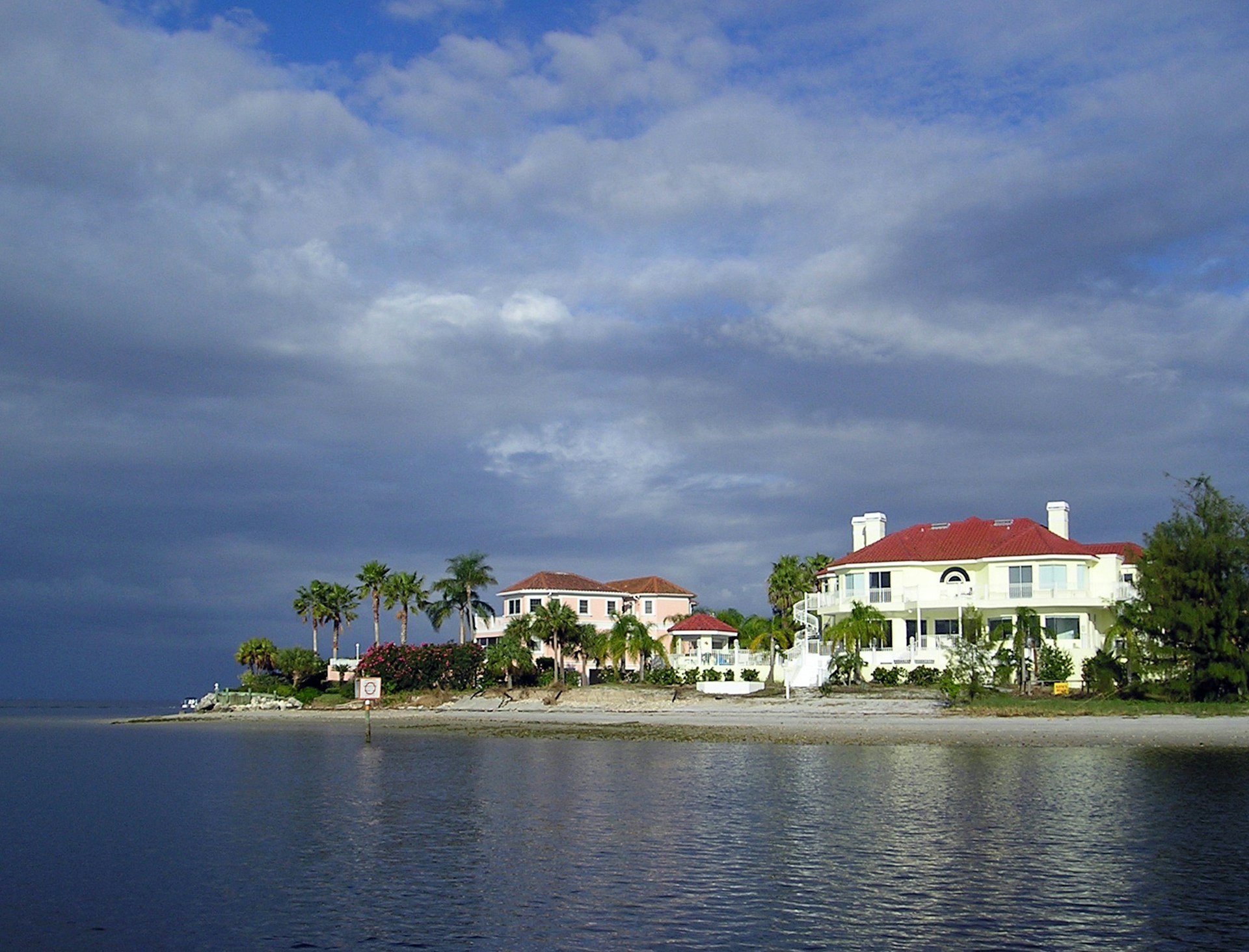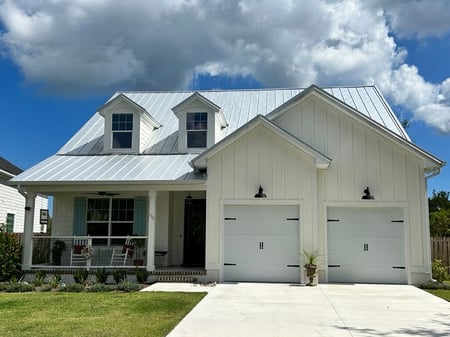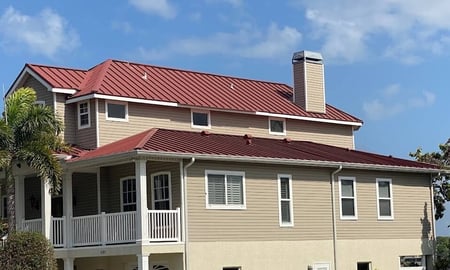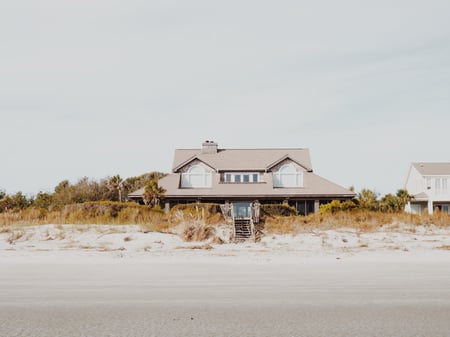Exposed Hardware Metal Roofing: Is It Bad for Coastal Homes?
February , 2024 | 6 min. read
By David Toth

Everyone loves the sleek look of a chic metal roof, but when it comes to considering exposed metal roofing for coastal homes, it's important to take a closer look at the benefits and potential drawbacks. Metal roofing has gained popularity for its durability, longevity, and appearance. However, when it comes to coastal areas, some factors need to be carefully considered.
At RoofCrafters, we can tell you from experience that the high levels of saltwater exposure and strong winds in coastal regions can pose challenges for metal roofs. So, we want you to understand factors such as these so you'll be better equipped to make an informed decision for your coastal home.
That being said, if you’re lucky enough to call the beach your backyard, or you’re looking to install a new roof on your coastal property and you’re unsure of the best route to take, you’re in the right place! In just a few moments, you’ll learn exactly what exposed metal roofing is, the different types, whether or not it’s a suitable choice for your home, and what your other roofing material options are. Let’s get started!
What Is Exposed Hardware Metal Roofing?

Exposed hardware metal roofing refers to a type of metal roofing system where the fasteners or hardware used to secure the metal panels to the roof structure are visible on the surface of the roof. In this design, screws or nails are typically installed through the metal panels and into the underlying structure, leaving them exposed to the elements. This creates a distinct visual aesthetic, often characterized by the visible rows of fasteners running across the surface of the roof.
Exposed hardware metal roofing can offer a rustic or industrial appearance and is often chosen for its durability and cost-effectiveness. However, the exposed fasteners can potentially become points of entry for moisture if not properly installed and maintained, which could lead to issues such as leaks over time. Proper installation and maintenance are essential to ensure the longevity and performance of this type of roofing system.
There are several types of exposed hardware metal roofing systems, each with its own characteristics and advantages. Some of the most common and popular choices include:
Screw-through panels: In this type of system, metal panels are attached to the roof structure using screws that penetrate through the panels and into the underlying substrate.
Nail-through panels: Similar to screw-through panels, nail-through panels use nails instead of screws to secure the metal panels to the roof structure. This type of installation is often seen with standing seam metal roofing.
Corrugated metal roofing: Corrugated metal roofing consists of panels with a wavy or ridged profile. The panels are typically fastened to the roof structure using screws or nails, with the fasteners placed in the valleys of the corrugations.
Exposed fastener standing seam: Standing seam metal roofing features raised seams that interlock to provide weather resistance. In exposed fastener standing seam systems, the fasteners used to secure the panels to the roof structure are visible along the raised seams.
R-panel roofing: Ribbed metal panels, also known as R-panels, have raised ribs or striations that run vertically along the length of the panels. These panels are often installed with exposed fasteners, typically placed in the flat sections of the panels between the ribs.
These are just a few examples of the types of exposed hardware metal roofing systems available. Each type offers its own aesthetic and functional characteristics, so it's essential to consider factors such as appearance, durability, and maintenance requirements when choosing the right system for your project.
Is Exposed Metal Roofing a Bad Choice for Coastal Homes?

Exposed metal roofing may not be the best choice for coastal homes due to a few reasons. Firstly, coastal areas are prone to high levels of saltwater exposure, which can cause corrosion and rust on metal surfaces over time. Even with corrosion-resistant coatings, constant exposure to saltwater can still lead to accelerated wear and tear on the roof. Secondly, coastal regions often experience strong winds during storms, and the exposed fasteners on metal roofs can be vulnerable to damage or loosening in these conditions.
This can compromise the roof's integrity and potentially lead to leaks. Lastly, metal roofs can be noisy during heavy rain or hail, which may be bothersome for some homeowners. So, while metal roofing has its benefits, it's important to consider these factors when choosing a roofing material for coastal homes.
Don’t let this reasoning alone deter you, though! Metal roofs are durable and can withstand harsh coastal conditions like high winds, saltwater exposure, and humidity with correct maintenance and repairs. The exposed hardware, such as screws or fasteners, can be made from stainless steel or other corrosion-resistant materials to prevent rusting.
This helps to ensure the longevity of the roof and maintain its structural integrity. Additionally, metal roofs are fire-resistant and can provide excellent protection against hurricanes and other extreme weather events. So, overall, exposed hardware metal roofing can be a great choice for coastal homes, as long as you’re prepared to nourish and properly take care of your roof!
What Are the Best Roofing Materials for Coastal Homes?

If you’re having second thoughts about metal roofing for your coastal home, and may not be prepared for the upkeep, there are many other suitable options! When it comes to your other roofing choices, one popular option is synthetic or composite roofing materials, such as polymer-based shingles or tiles. These materials are designed to mimic the look of traditional roofing materials like wood or slate, but they are more resistant to the effects of saltwater, humidity, and high winds.
Another option is concrete or clay tiles, which are known for their durability and ability to withstand harsh coastal conditions. They can provide excellent protection against hurricanes and are also resistant to saltwater corrosion. Lastly, if you're looking for a more modern and sleek option, you could consider a flat or low-slope roof with a liquid-applied membrane system, such as EPDM, TPO, or PVC.
These liquid roofing materials provide a seamless and watertight barrier that can withstand coastal elements. Each option has its pros and cons, so it's important to consider your specific needs and preferences when choosing the best roofing for your coastal home.
Exposed Metal Roofing for Coastal Homes: To Be or Not to Be
As you now know, when it comes to exposed metal roofing for coastal homes, there are a few key considerations to keep in mind. First and foremost, the high levels of saltwater exposure in coastal areas can lead to corrosion and rust on metal surfaces over time. Even with corrosion-resistant coatings, the constant exposure to saltwater can still cause wear and tear on the roof, especially if you’re not properly maintaining your roof.
Not to mention, the strong winds often experienced in coastal regions can pose a risk to exposed fasteners on metal roofs, potentially compromising the roof's integrity and leading to leaks. Lastly, metal roofs can be noisy during heavy rain or hail, which might not be ideal for some homeowners. Personally, though, I think it’s soothing, but I digress.
While metal roofing has its benefits, it's important to weigh these factors when deciding on the best roofing option for your coastal home. Remember to consult with a professional roofer, like RoofCrafters, who has years of experience in coastal areas for personalized advice! Hit that “Schedule an Inspection” button down below, and one of our experts will walk you through your options.
My name is David Toth and I am the lead estimator in North Florida with RoofCrafters Roofing. Originally from New Brunswick, I have called Florida home for the past 47 years. I enjoy cooking along with traveling to different historical areas in Florida when I have free time.



